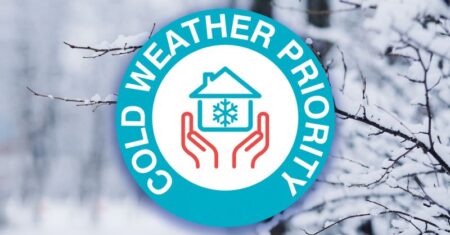
At best, the statistics provide trends over time rather than a snapshot at a specific point.
Full poverty used to be defined as a household that needed to spend more than 10% of its income on energy in order to provide a satisfactory heating regime.
A number of different charities, including the National Energy Action (NEA), use this method and have estimated that the number of homes in fuel poverty in the UK in 2022 was 6.5 million and is expected to be around 7.5 million in 2023.
In England, the Government introduced a new definition of fuel poverty in 2021. This is the ‘Low Income Low Energy Efficiency’ (LILEE) definition of fuel poverty. Here a household is fuel poor if:
• they are living in a property with an energy efficiency rating of band D, E, F or G
• their disposable income (income after housing costs and energy needs) is below the poverty line.
The depth of fuel poverty is measured by the fuel poverty gap, which is the reduction in fuel costs needed for a household to not be in fuel poverty. In 2022 the mean average fuel poverty gap was £338 per fuel poor household and is projected to increase to £443 in 2023.
In 2022, there were an estimated 13.4 per cent of households (3.26 million) in fuel poverty in England under the Low Income Low Energy Efficiency (LILEE) metric, up from 13.1 per cent in 2021 (3.16 million).
Characteristics that impact fuel poverty
Off-grid and rural
Note: Oil heated homes are all off the gas grid, and c90% are deemed rural. However, the majority of off-grid homes are electrically heated
• Households living in rural areas have the highest fuel poverty rate, of 15.9% in 2022, and the largest fuel poverty gap, at £956.
• Households living in rural areas are, on average, in much less energy efficient and much larger properties but have higher than average median incomes. Rural properties have a higher incidence of being off the gas grid (56.8% compared to just 9.0% of urban properties).
• Of households living in properties not on the gas grid, 20.1% are fuel poor compared to 12.3% on the gas grid.
• The average fuel poverty gap for households off the gas grid was £804, over three times higher than on gas grid households (£222).
The number of homes in fuel poverty in the UK is expected to be around
7.5 million in 2023.
House type
Note: c50% of oil heated homes are detached
• Those living in detached properties have the lowest likelihood of fuel poverty (7.6%). However, households living in detached properties have the largest average gap at £702, partly due to the number of exposed walls which contribute to a lower energy efficiency rating and higher floor areas.
• Households living in detached homes had much higher median incomes than other households, which explains the lower levels of fuel poverty, but households with the highest floor areas had the highest fuel costs and, therefore, the highest fuel poverty gap.
Property age
Note: c40% of oil heated homes were built before 1919
• Households living in properties built before 1919 have the highest average gap, at £507, and the largest proportion in fuel poverty (22.2%). This is due to their lower-than-average energy efficiency rating and higher-than-average floor area leading to a higher-than-average fuel cost for older homes compared with newer ones.
Regions
• There is a high level of variation in fuel poverty rates between regions. The West Midlands had the highest rate of fuel poverty at 19.2%, compared to 8.6% in the South East. Given there are similar median energy efficiency ratings between regions and similar median fuel costs, the lower median incomes seen in northern regions and West Midlands have driven the higher shares of fuel poverty. The South West had the second highest median floor area (86m2), which drives the highest median fuel costs (£1,711) and hence the highest average fuel poverty gap of £521.

